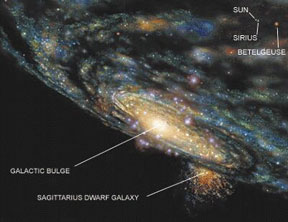Introduction:
Astronomy is a field that has fascinated humans for thousands of years. One of the most intriguing aspects of this science is the study of galaxies, vast collections of stars, and other celestial objects that are held together by gravity. However, measuring the distance to these galaxies is not an easy task. In this blog, we will discuss how astronomers measure the distance to the nearest galaxy from Earth.
Body:
The nearest galaxy to Earth is the Canis Major Dwarf Galaxy, which is located about 25,000 light-years away. To measure this distance, astronomers use a variety of methods, including:
Parallax:
This method involves measuring the apparent shift in the position of a star as seen from different points in Earth's orbit. By knowing the angle of the shift and the distance between the two observing points, astronomers can calculate the distance to the star. However, this method can only be used for relatively nearby stars and not for galaxies.
Standard Candles:
Certain types of stars, such as Cepheid variables, have a known intrinsic brightness that is related to their period of variability. By measuring the apparent brightness of these stars, astronomers can calculate their distance using a technique called the distance modulus. This method has been used to measure the distances to galaxies within a few hundred million light-years of Earth.
Type Ia Supernovae:
These are exploding stars that have a known intrinsic brightness, making them useful as standard candles for measuring the distance to galaxies. By measuring the apparent brightness of these supernovae and comparing it to their known intrinsic brightness, astronomers can calculate the distance to the galaxy in which they occurred. This method has been used to measure the distances to galaxies up to billions of light-years away.
Conclusion:
In conclusion, measuring the distance to galaxies is an essential part of astronomy. Astronomers use various methods to calculate the distance to the nearest galaxy from Earth, such as parallax, standard candles, and Type Ia supernovae. These methods have helped us to gain a better understanding of the vastness of the universe and our place within it.
